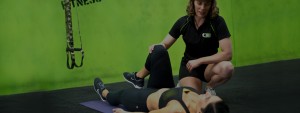Most health or fitness professionals will suggest that you need to stretch muscles that are tight and strengthen those that are weak.
This works in theory for many people, but there are just as many people for whom stretching is not a great idea.
As a Chek Practitioner I use the Rocabardo scale (although that he actually founded it is debatable) or otherwise known as the 9 point flexibility test to assess your body’s ability to be flexible. If a client is on the high end of the scale they will tend towards not needing to stretch but if they are low on the scale, they will need to stretch.
However I also complete a thorough range of motion assessment that tells me what exactly is tight, what is taut and what is not.
I also watch and listen to your body.
There are various reasons that a muscle or group of muscles might be tight and that is what I want to highlight in this blog.
Your body craves stability. It wants to secure the system and protect your organs.
The role of muscles is not just in movement but also in stabilization. You will have a primary muscle or group of muscles working as agonists and a group of muscles working in conjunction with those as antagonists. You will also have synergist muscles working alongside both the agonists and antagonists.
If you have a joint that has a network of tight muscles around it, this is a red flag for me to investigate further why this is happening.
Muscles can become tight from overuse but they can also be that way as a protection mechanism for something deeper that is occurring. For example the hip flexor group of muscles is notorious for being tight in many people. This can be because we spend much of our days in a sitting position but it can also be because it is the last attempt by the body to stabilize the leg against an unstable pelvis.
When the pelvis is unstable there is a high likelihood that the lumbar spine is also unstable.
The leg weighs a tonne! Add gravity that is pulling it down and you have a significant load. The core musculature (and no I don’t just mean the obvious abdominal wall muscles – but that is another blog) will need to provide immense stability whilst you have a heavy load swinging off the end of your body in your gait pattern.
Sure the hip flexors might get tight!
But stop to consider what else tight muscles are telling you.
Your viscera does not have the nerve pathways that your muscles do. Your viscera talks to you via referring out through the muscular skeletal system.
Having a heart attack? Did you feel it in your arm?
Having contractions when you are in labour? Did you feel it in the muscles in your lower back?
Very rarely will you say that you can feel pain in an organ.
A tight muscle can be a sign that an organ is overloaded and under stress.
It is important to remember that what you can see on the outside of your body is a small part that makes up what it is happening on the inside of your body.
If you stretch and find that you become unstable afterwards, maybe there was a reason your body was holding onto that tightness. Stretching should increase the length of a muscle, thereby giving a joint or a number of joints greater range of movement, if movement had been restricted prior to stretching.
Stretching should not leave a joint open to injury by destabilizing it.
Be careful about the way you stretch and if in doubt seek the advice of a professional.
Tanya Carroll
Livestrong Primal Fitness





Leave a Reply